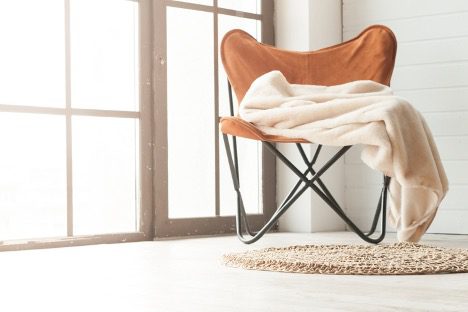Each month, we are examining the core principles of one of the ten concepts of the WELL Building Standard. The Standard identifies over 100 performance metrics, design strategies, and policies that are divided into ten sections or concepts: Air, Water, Nourishment, Light, Movement, Thermal Comfort, Sound, Materials, Mind, and Community. This month, we’re learning more about the Light Concept.

THE LIGHT CONCEPT
INTRODUCTION
We know innately that light is critical to our wellbeing and ability to function normally. Our exposure to light, both natural and artificial, impacts our bodies’ circadian rhythm, the internal clock that regulates physiological functions like the sleep-wake cycle and hormonal regulation. Disruption of the circadian rhythm has been linked to a number of physical ailments, mental illnesses, and metabolic disorders. In order to maintain balance, the human body needs periods of light and darkness on a 24-hour cycle.
In addition, exposure to light can affect our ability to heal, our mood, our cognitive function, and our performance. Exposure to large windows and/or skylights, an abundance of natural daylight, artificial light with the correct level of brightness and temperature, and the ability to control light levels and glare all contribute to a person’s overall wellbeing in an interior space.
Most buildings designed today provide lighting for visual needs but fail to take into account our mental health needs and the patterns of human circadian cycles. The WELL Light concept aims to provide a lighting environment that reduces circadian phase disruption, improves sleep quality, and positively impacts mood and productivity.
GOALS
One of the key concepts of the WELL Building Standard is the use of natural light to improve the health and productivity of building occupants. The standard includes requirements for the amount, distribution, and quality of natural light in a space, as well as the use of shading and glare control to reduce the negative effects of direct sunlight. Additionally, the standard includes guidelines for the use of artificial light, including the use of tunable white lighting and the ability to control lighting levels throughout the day. The goal of these guidelines is to create a healthy and comfortable indoor environment that supports the wellbeing of building occupants. This is achieved by:
- Providing indoor light exposure though daylight and electric light strategies
- Provide visual comfort and enhance visual acuity through electric lighting
- Support circadian and psychological health through indoor daylight exposure and views to the outdoors
- Minimize glare caused by electric lighting
- Provide daylight exposure through design strategies
- Ensure indoor daylight exposure through daylight simulation strategies
Provide customizable lighting environments
HEALTH IMPACTS OF LACK OF NATURAL LIGHT
- Depression
- Anxiety
- Irritability
- Sleep disruption
- Reduced cognitive function
- Seasonal affective disorder
- Decreased productivity
- Vitamin D deficiency


HEALTH IMPACTS OF ARTIFICIAL LIGHT
- Circadian phase disruption
- Sleep disturbances
- Eye strain
- Risk of obesity
- Risk of diabetes
- Risk of cancer
At TSD we believe it is important for both professionals (architects, interior designers, and contractors) as well as building users (homeowners, business owners, school administration, maintenance personnel, etc.) to understand the problems as well as the potential solutions for creating and maintaining healthy interior spaces. By designing interior spaces and lighting plans with all of these requirements in mind, we can create healthier and more productive environments for the people inhabiting these spaces.
If you want to know more about making your home or office a safer and healthier environment, reach out to us by email or DM us on Instagram. Also, stay tuned next month when we introduce the fifth WELL concept: Movement.

Taleah Smith Design is an interior design studio based in Vancouver, British Columbia. We specialize in interior design that promotes wellness and sustainability. We believe your living space should promote a greater sense of health and wellbeing, and we approach this goal from many difference angles. If you would like to discuss a project, you can reach out to us here.
We also provide resources and consulting for other interior designers looking to integrate wellness and sustainability into their design practices. If you would like to learn more, contact us here.
